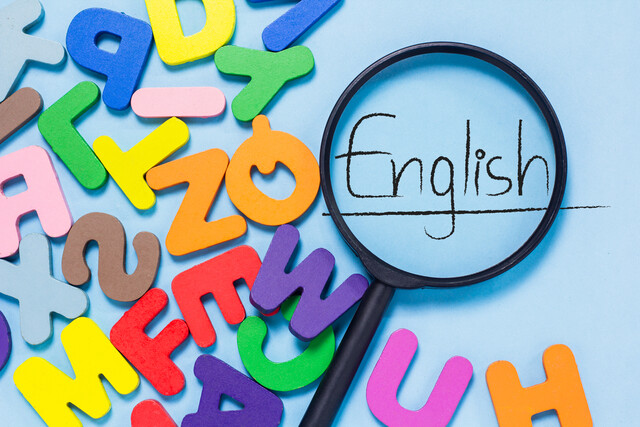Despite the rise in social and mobile communication, e-mail as a way of communicating in the workplace, and as a way of marketing, is definitely here to stay. Here is some recent data compiled by Mail Chimp and by Sales Force:
-
Seventy-three percent of marketers report that e-mail marketing is the core of their business.
-
Seventy-four percent of marketers believe e-mail produces ROI, or will produce ROI, for their firm in the future.
-
Sixty percent of marketers claim that e-mail is a "critical enabler" of their company's products and services (up from 42 percent of marketers in 2014).
-
According to the Direct Marketing Association, 95 percent of online consumers use e-mail, and 91 percent of them check their e-mail at least one time a day.
In addition, according to eMarketer, 69.7 percent of American Internet users say e-mail is their preferred method of communicating with businesses.
So there is no question about the importance of e-mail to your career. The question is, how can you say what you want to say and get it right the first time? You may offer excuses, such as "I'm not a writer," "I just don't know what to say," or "It takes me so long to get my thoughts down."
In his book Pitch Perfect, veteran television journalist Bill McGowan, offers seven principles for getting a message right the first time, which can easily translate to e-mail writing. Let's take a look at them.
1.The Headline Principle. Whether it is a newspaper headline, or a blurb running across the bottom of your TV screen that lets you know about a top news story coming up next, headlines are designed to get our attention. The headline of your e-mail is your subject line. It can make all the difference in your message being read.
The goal of your subject line is to catch your reader's eye as he or she checks the inbox, and to make him or her want to know more. So, how do you nail a catchy subject line the first time?
Short and sweet and to the point is your best bet. In a recent study on subject lines, Mail Chimp studied the open rates for more than 200 million e-mails. E-mails with short, to the point subject lines had the best results.
Too many business people create a subject line almost as an afterthought, but in order for your message to hit its mark read, you may need to spend as much time on the subject line as on writing the message itself.
The Mail Chimp study found that the most successful subject lines were fewer than 50 characters long. This length usually translates to less than seven words. Since at least 50 percent of e-mails are read on mobile phones, it is important to be concise, or your subject line may not be viewable by your reader.
Avoid vague or mysterious statements or questions, or cutesy language. The subject line should tell the recipients exactly what they need to know to determine its importance without having to open it. If your office has a heavy stream of e-mail communication, consider adding, "Action required," or "FYI only" phrases to help your colleagues prioritize information.
Here are some examples of good subject lines for different business situations:
For a job application:
Marketing Assistant Application -- Jane Doe
For an interview follow up:
Jane Doe Following Up on Marketing Position Interview
For a meeting invitation:
Emergency board meeting Monday at 7 p.m.
For a work request:
Request for end-of-year report by Dec. 15
For a marketing pitch:
Digital Media Webinar -- Sign up today
For requesting information:
Inquiring about availability of your venue in May
2. The Scorsese Principle. Using visual examples from director Martin Scorsese's work, author McGowan discusses the importance of details to any message. What are the important details you want your reader to know?
Your e-mail recipients always have in the back of their minds some version of, "What is in it for me?" when they read your message. Since you want your e-mail to be concise, choose just the right details to get your readers' interest, without overwhelming them.
Here is an example of an effective, detailed business message:
Hi David,
Since last week's staff meeting, I have identified an option for reducing my commuting costs and increasing my productivity. I am proposing that I telecommute at least one day a week.
As you know, a large component of my job is conducting research and compiling marketing reports for each Friday manager's meeting. Preparing these reports requires about eight hours of uninterrupted time. If I telecommuted on Wednesdays, I feel I could better concentrate on these reports, with fewer distractions, and less stress.
May I discuss the benefits of my telecommuting with you at our Monday meeting? In the meantime, I will pull together details on any hardware or software I may need to equip my home office.
I look forward to talking with you soon.
Thanks,
Andrea
3. The Pasta Sauce Principle. Every chef knows that a great sauce is better when it is reduced to its essence. This idea applies to e-mails, as well.
Less is more when it comes to effective e-mails. Resist the urge to include everything you know about a subject. How long should a good e-mail be? There is no perfect answer, since the length depends upon your subject matter. However, you should think of your e-mail in terms of a few paragraphs, not a few pages.
Your sentences and your paragraphs should be short and to the point. When you write long blocks of text, you run the risk of boring your reader, who may click out of your message never to return.
4. The No-Tailgating Principle. We should be slow to speak and slow to anger. This principle makes good sense in e-mail communication, as well.
Take the time to determine the purpose of your e-mail. Will your writing make the situation better or worse? Do not e-mail angry.
Remember that no e-mail is truly private. It can be copied or forwarded to any number of people. In any business situation, but especially in heated ones, take the time to clear your head and cool your heels before you send an e-mail that could potentially sabotage your professional reputation.
5. The Conviction Principle. Match the tone of your e-mail with your audience and provide the necessary information to back up your points.
In the telecommuting example above, for example, Andrea presents her plan with conviction. Yet she shows respect to her supervisor by offering to discuss the details with him at a planned meeting.
Avoid asking your recipients too many questions. Be respectful of their time and keep your message direct and meaningful.
6. The Curiosity Principle. McGowan relates that the best broadcast interviewers show a sincere interest in their subjects.
When you show you care about your readers, you convey both interest and respect. Do your homework to find out the name of the person you need to target with your e-mail. Make sure you spell it correctly.
Avoid undermining your competitors or your co-workers in your message. State your case simply, and you will convey professionalism.
7. The Draper Principle. This one is named for Don Draper of TV's Mad Men, who has an uncanny ability to win pitches. One way to do this in business communication is to play to your strengths. Be honest and show your character with every message.
By keeping to a simple five-part structure with your workplace e-mails, it is difficult to go wrong. Here is the simple structure:
1. Greeting
2. Identification and purpose of e-mail
3. Call to action
4. Closing
5. Signature
When is an e-mail not the best choice?
Sometimes the very reason e-mail is a great mode of communication (it is quick and easy) make it the wrong choice for certain business situations.
For example, if you have made a mistake or hurt someone's feelings, it usually is better to do this in person, or at least over the phone.
Your nonverbal cues are of a high priority when it comes to apologies. You need to convey complete sincerity and not run the risk of being misunderstood in any way.
In addition, by handing a potential confrontation or other delicate situations face-to-face, or over the phone, you do not run the risk of your message being forwarded to others who might otherwise be uninvolved.
If you must send a confrontational e-mail – either because the person is unavailable by phone, or because you need a written record of the problem – be as brief and to the point as possible, but strive to maintain a pleasant and professional tone. Here is an example:
Hi Caleb,
I noticed that you missed your report deadline this week, and it is the second time you missed your deadline this month. As you know, missed deadlines affect the whole team.
I wanted to check in with you to see if everything is okay. If, for some reason, you need more time between deadlines, we can talk about some options.
Please let me know if you would like to talk either in person, or over the phone.
Best,
Alison
You'll notice that this e-mail sends a clear message that the missed deadlines are not acceptable, but it also offers a way to resolve the situation amicably. In certain situations, a brief e-mail may be so brief that it sounds terse.
Contrast the above message with this shorter but more abrupt message that could make the situation worse.
Caleb,
Noticed you missed your deadline again for the second time this month. What's up?
We need to talk.
Allison
As you can see, even though the writer of the second message meant no offense, the tone may give the wrong impression. The absence of polite greeting and closing phrases add to the chilly tone. In addition, phrases such as, "What's up?" and "We need to talk" can sound harsh without body language to lighten them up.
There are other situations when an e-mail is not necessary. When a situation has been handled to everyone's satisfaction, you do not have to send a final "Thanks!" message, for example. Think carefully about those FYI messages before you send them. Do you really need to send that, or can that information wait until the weekly staff meeting.
Also, do not hit "Reply All" unless you are certain that everyone needs to hear what you have to say.
Never rely on e-mail communication, alone, to make big decisions, or to analyze complicated business issues, such as policy revisions. The amount of time in back and forth could be staggering. It would be much more time-efficient to handle these important issues with a face-to-face meeting or teleconference.
When you model professional e-mail practices, you can encourage everyone around you to send messages only when they are appropriate and necessary.
Now, back to the frequent laments we referred to near the beginning of this article: "I'm not a writer" or "I just don't know what to say."
Learning to write effective e-mails does take time and practice. French philosopher Blaise Pascal once wrote, "If I had more time, I would have written you a shorter letter." His perspective couldn't be truer today. It often takes more time to write short e-mails than it does to write long ones.
Putting your message into as few words as possible requires you to concentrate on your purpose and your intended outcome. Here is a checklist to follow after you have completed the task:
-
Is my meaning clear?
-
Could any information be misunderstood or misinterpreted?
-
Is my tone professional? How does it sound when read aloud?
-
Have I included any unnecessary words or sentences?
-
Do I need a call to action?
-
Have I carefully proofread for typos and other errors?



























